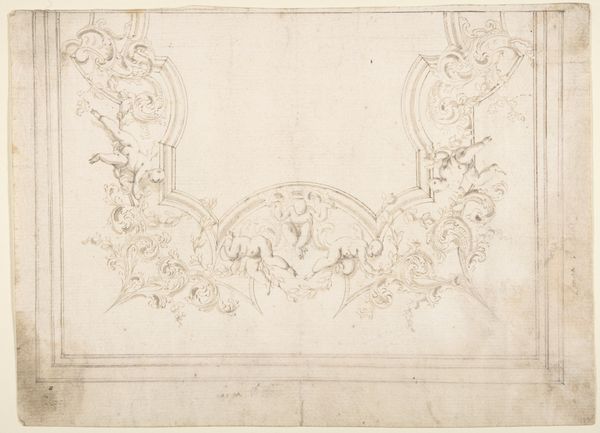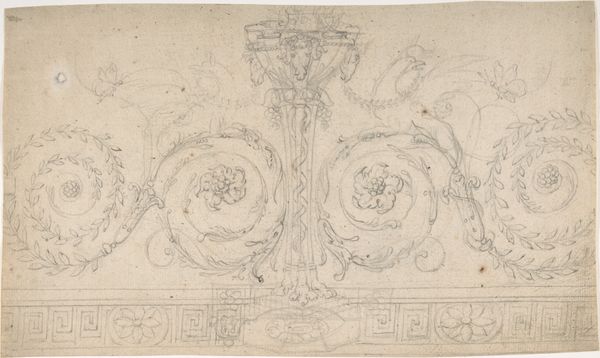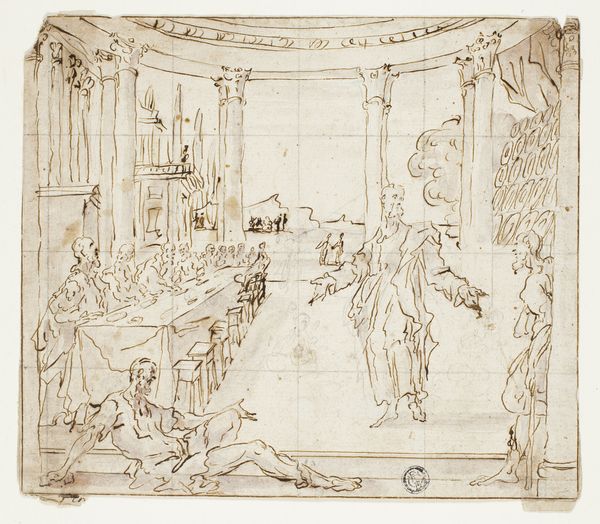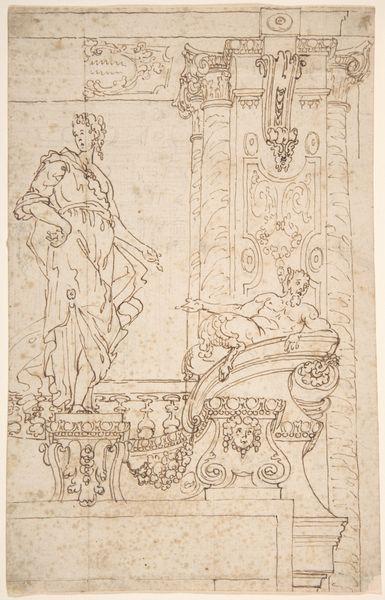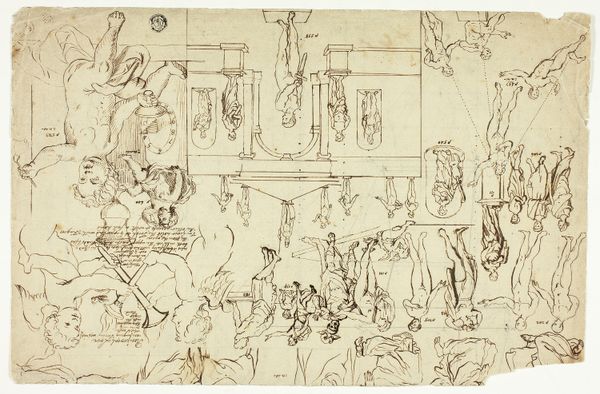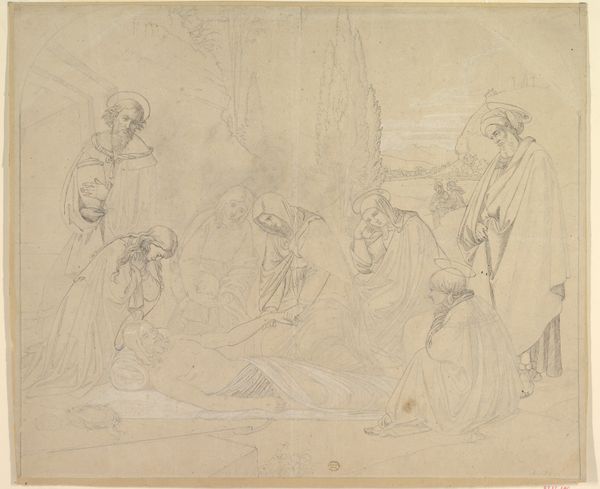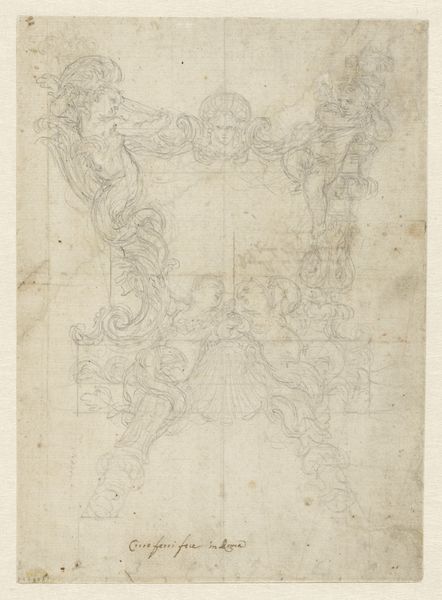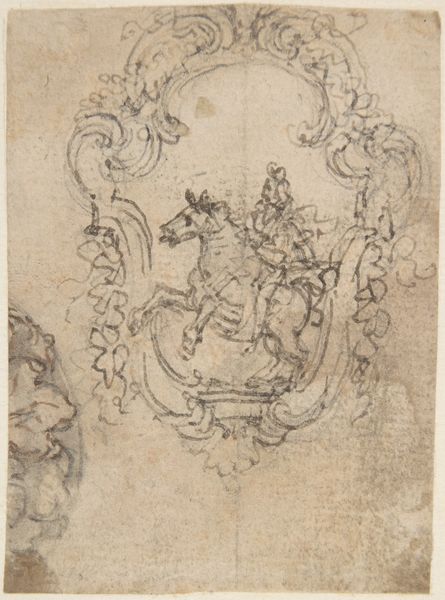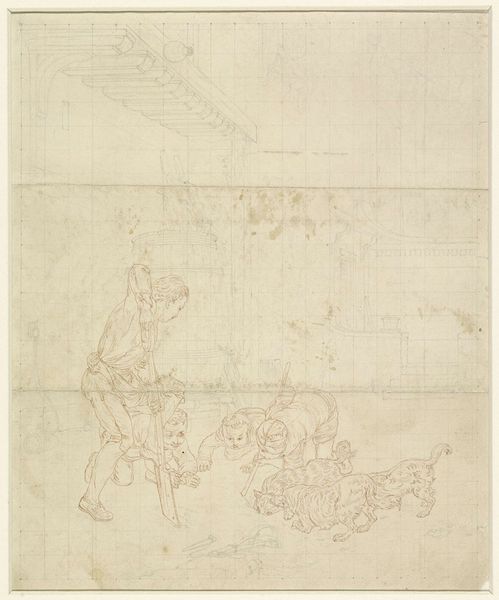
Design for Bed Alcove (recto); Studies for Statues and Carvings on Bed (verso) 1805 - 1840
0:00
0:00
drawing, pencil
#
drawing
#
neoclacissism
#
landscape
#
pencil
Dimensions: sheet: 8 x 13 1/2 in. (20.3 x 34.3 cm)
Copyright: Public Domain
Editor: This pencil drawing, “Design for Bed Alcove (recto); Studies for Statues and Carvings on Bed (verso),” by William Pitts, was created sometime between 1805 and 1840. It's quite detailed. What strikes me is how this idealized design focuses on the luxurious, almost theatrical, presentation of sleep. What do you see in this piece, from your perspective? Curator: Well, let’s consider the material conditions of this bed alcove's potential creation and consumption. We are looking at a neoclassical design, a style often associated with aristocracy. This design highlights both the availability of specialized labor - the carving and construction - and the accessibility of these expensive materials, which reflect the social relations embedded within that consumption. Think of the source and transportation of materials such as the textiles and timber – processes fueled by exploitation. Editor: That's a different lens. I was focused on the artistic style and aesthetic value of the image. So, you are saying the design’s luxury is inseparable from production? Curator: Exactly! The "design" obscures the labor involved, creating a romanticized image for consumption. These elements point to the massive division of labor. Consider the division between the artist, like Pitts, and the artisans realizing his vision. How does this separation contribute to our understanding, or misunderstanding, of craftsmanship and art? It poses critical questions regarding high art versus decorative art or functional craft. Editor: I never thought about it that way before. It is a reminder to consider who benefits from the labor involved and what the consumption of this manufactured beauty implies in a larger societal context. Curator: Indeed. By examining these aspects, we can uncover hidden narratives and engage in critical dialogues concerning value, class, and the societal forces shaping our perceptions of art. Editor: I see that this drawing contains worlds beyond Neoclassical design.
Comments
No comments
Be the first to comment and join the conversation on the ultimate creative platform.


